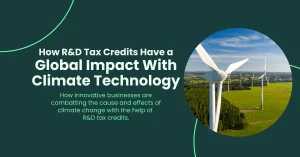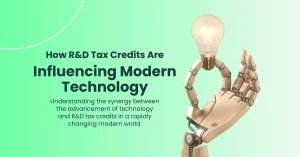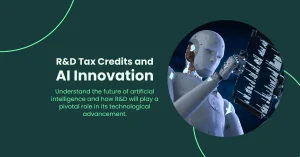FoodTech 101: A beginner’s guide to the future of food
8 February 2024

The FoodTech industry is experiencing rapid growth, transforming not only hospitality establishments like bakeries and restaurants but also the food in our home fridges. Businesses are leveraging innovative thinking to overhaul how food is being distributed, manufactured, marketed, and consumed. Investors are directing their attention towards FoodTech startups, and the UK is witnessing a surge in food technology activity, driven by increasing demand. What can we expect from the FoodTech industry? Let’s explore this and define the top trends.
What is the meaning of FoodTech?
Food tech, short for food technology, refers to the application of technology to various aspects of the food industry. It involves the use of innovative tools, techniques, and technologies to enhance efficiency, sustainability, and safety in the production and delivery of food products. Food tech encompasses a wide range of innovations, including precision agriculture, smart packaging, food processing advancements, and digital solutions that aim to revolutionise how we grow, produce, and consume food.
Lots of startups utilise research and development (R&D) to solve challenges in the food industry. This involves risk-taking; setting out on a mission without knowing if it can be solved 100% but trying to overcome it nevertheless. FoodTech companies aim to address challenges in the food industry, such as improving sustainability, enhancing efficiency in production and distribution, ensuring food safety, preventing world hunger, and creating innovative solutions for changing consumer preferences in an increasingly digital world.
What’s the difference between FoodTech and food science?
Food technology could be considered by certain specialists as a subset of food science. FoodTech focuses on the application of technology to improve and innovate various aspects of the food industry, including production, distribution, and consumption. On the other hand, food science is a broader field that examines the physical, chemical, and biological aspects of food to comprehend its composition, properties, and behaviour. It often provides foundational knowledge that can be applied to drive innovations in FoodTech. For example, food science includes experimentation to replicate the texture of meat for a plant-based alternative.
Examples of FoodTech activities
The food and beverage industry is bustling with innovation. Here are some examples of FoodTech innovations that are reshaping industrial trends:
Personalised nutrition
We’re living in a health-focused era where we have a heightened awareness of our well-being by counting our steps using our smartphones, using wearable tech to gauge metrics from our workouts, checking in on our mood with wellness apps, and more. When it comes to nutrition, lots of people don’t want a one-size-fits-all approach. Personalised nutrition can be used for people with high cholesterol, or who have specific vitamin deficiencies. It can even look at a person’s genetics, and using Artificial Intelligence, we can now generate a specific meal plan.
Analysing food safety with technology
There have been too many tragic occasions where wrongly labelled food has been purchased by people with serious allergies. Technology can help us increase food safety at all stages of the food ecosystem. From blockchain for transparent supply chains to IoT sensors monitoring storage conditions checking temperature, and AI-driven quality control systems, technology ensures real-time tracking, early detection of contaminants, and improved traceability, ultimately contributing to safer and more secure food production and distribution.
Plant-based alternatives
How can we source protein from our diets sustainably that tastes good and is versatile across all dishes and cuisines? This is a question many innovative businesses are grappling with, to provide versatility for those with vegan and vegetarian diets. The supermarket shelves look very different to how they did a decade ago, moving past the same vegetarian sausages with new options of realistic nut roasts, vegan flaky fish, and baked goods that don’t use eggs or cow’s milk.
There is increasing investment and interest in these projects. For example, Bill Gates has financed the vegetarian burger made by Impossible Foods.
Technologies such as extrusion, fermentation, and isolation processes are used to extract and refine plant proteins. This allows for the creation of meat substitutes with textures and flavours resembling traditional animal products. Data analytics and machine learning algorithms can analyse vast datasets to optimise the formulation of plant-based products, while 3D printing creates intricate structures and textures in plant-based foods, offering new possibilities for product development.
Vertical farming
Vertical farms cultivate crops in vertically stacked layers or inclined surfaces within controlled environments, utilising advanced technologies for efficient and year-round food production.
Essentially, they earn the spot of FoodTech by integrating advanced technologies, such as controlled environment agriculture, energy-efficient lighting, hydroponics, and automation. These technologies optimise and enhance food production efficiency by cultivating crops in vertically stacked layers or inclined surfaces within indoor settings. R&D projects may look at using a combination of data analytics, machine learning, and robotics to optimise plant growth.
AgTech
On the topic of farming, there are bustling innovations taking place in the field of AgTech. From farm management software, weather monitoring to determine conditions affecting crops, seed genetics to study and manipulate plant seed genes to enhance desirable traits, to hydroponics which is a soilless farming technique that involves cultivating plants in nutrient-rich water solutions.
Preventing food waste
Several food technologies are employed to prevent food waste at various stages of the food supply chain.
- Smart packaging with sensors: Packaging equipped with sensors and indicators, such as temperature and freshness monitoring devices, provides real-time information about the condition of perishable goods, helping to reduce spoilage and waste during transportation and storage.
- Precision agriculture: Precision agriculture technologies, including sensors, GPS, and data analytics, optimise farming practices by monitoring crop health, reducing resource use, and improving overall efficiency, ultimately minimising losses in the agricultural production process.
- Blockchain traceability systems: Blockchain technology enhances transparency and traceability in the food supply chain, enabling quick identification and removal of products at risk of contamination or spoilage. This helps prevent the distribution of unsafe or expired food items.
- Surplus food redistribution platforms such as apps: Technology platforms connect food producers, retailers, and charities, facilitating the efficient redistribution of surplus food to those in need. These platforms play a crucial role in minimising edible food sent to landfills and helping hungry mouths get fed.
- Data analytics for inventory management: Advanced data analytics and machine learning algorithms help businesses optimise inventory management by analysing consumer behaviour, market demand, and inventory levels. This reduces the chances of overstocking and understocking, leading to a significant reduction in food waste.
These examples demonstrate how FoodTech actively prevents food waste, enhancing sustainability and efficiency across the entire food supply chain, from the farm to the consumer.
Replacing monotonous tasks with robotics and automation
As technology evolves, there is growing worry among some that one day human workers will be replaced by machines, with robots serving our food. In reality, we’ll always need human effort in the hospitality industry. FoodTech is removing the monotonous tasks involved within the industry by introducing robotics and automation, lightening the workload.
From precision and efficiency in tasks like cutting, sorting, and packaging to the integration of robotic chefs and automated delivery systems, these technologies are enhancing productivity, ensuring food safety, and shaping the future landscape of food-related processes.
Smart food storage
Smart food storage solutions leverage advanced technologies such as temperature and humidity sensors, RFID tracking, and IoT connectivity to monitor and control environmental conditions, ensuring optimal freshness and preventing food spoilage. By employing these innovative storage systems, consumers and businesses can enhance food shelf life, minimise waste, and make informed decisions based on real-time data about the condition and safety of stored food items.
Agriculture marketplace
Agriculture marketplaces in FoodTech leverage technology to connect stakeholders in the agricultural supply chain, enhancing efficiency in transactions, data analytics, and supply chain optimisation. These platforms contribute to the broader goals of FoodTech by incorporating traceability, and transparency, and integrating precision agriculture technologies for sustainable and informed decision-making. By digitising traditional processes, agriculture marketplaces play a vital role in advancing the overall efficiency and sustainability of the food supply chain.
Kitchen Tech for efficiency
Kitchen tech, within the realm of FoodTech, encompasses a range of innovative technologies designed to enhance and streamline the cooking and food preparation process. It’s normal and accepted for people to have top-of-the-range coffee machines in their homes, with milk frothers, superfast blenders, and electric whisks, all of which didn’t exist not too long ago and the jobs involved manual strength. Recent examples of kitchen tech include smart appliances such as connected ovens and refrigerators that users can control through mobile devices, precision cooking gadgets that employ sous-vide techniques, and smart kitchen scales featuring integrated recipe apps.
These technologies aim to bring efficiency, precision, and convenience to home kitchens, aligning with the broader trends in FoodTech to integrate digital solutions into various aspects of the culinary experience.
Transforming food processing
Food processing relates to the transformation of food, starting with agricultural products. Using FoodTech, we can integrate various technologies such as artificial intelligence, robotics, and biotechnology to enhance efficiency, quality, and sustainability in various stages of production. By advancing existing processing methods, we can improve food safety as well as nutritional content.
Biotechnology can achieve food processing with the application of biological principles, processes, and systems to develop innovative solutions for the production and processing of food. This can include genetic engineering, fermentation processes, and the use of microorganisms to improve food safety, nutritional content, and shelf life. Biotech innovations play a significant role in advancing the capabilities of the food industry to meet the demands of a growing population and evolving consumer preferences.
Standout examples of FoodTech
To show the versatility of FoodTech as well as the impact it’s having, here are 3 examples our team has chosen that truly stand out as transformative examples that redefine the way we eat and drink.
- Air Up Water Bottle: The bottle provides fun and versatility for hydration. Using scent technology, you experience a multitude of flavours from your water by adding a scented pod to the water bottle that tricks your brain as you experience flavoured water when in reality you are just drinking plain water.
- Father Farms: They have innovated long-lasting alternatives to traditional frozen foods, by using supercritical fluids of carbon dioxide to help the global distribution of food. They describe what they’re trying to solve: “The distribution of much of our world’s most popular foods is reliant upon the cold chain, an expensive temperature-controlled supply chain that keeps foods refrigerated or frozen from production, to storage, to distribution.” Their solution not only increases food availability but creates significant energy savings in the process.
- Pizza Rebellion: It is the UK’s first robotic stand-alone pizza vending machine where in just 4 minutes, a pizza is freshly cooked for the consumer without a chef in the background operating it. The pizza recipes come from the founder’s restaurant which is why it is award-winning. They currently have 9 locations, at key train stations in the South of England, ready for hungry commuters on their way home from work.
Conclusion
The FoodTech industry is expected to grow at a compound annual growth rate (CAGR) of 9.9% from 2023 to 2030, meaning it is going to underpin the future of the food and beverage industry, helping us build and maintain a circular economy.
The surge in FoodTech startups, particularly in the UK, underscores the industry’s significance in meeting the demands of a changing world. As consumers increasingly prioritise convenience, health, and sustainability, FoodTech stands as a key driver in shaping a more efficient, diverse, and tech-infused future for the way we produce, distribute, and enjoy food.
Have you innovated anything with FoodTech?
As technology continues to grow in intelligence, it will directly impact the food we eat. If you have spent any money on a project related to FoodTech, you could have a strong R&D tax credit claim on your hands. This government initiative rewards tax credits to innovative businesses that have challenged technical and scientific uncertainties. The Alexander Clifford team can determine if you’re eligible during a non-obligatory call. Even if your project hasn’t yet reached your mission or you’ve not turned a project, your business can greatly benefit from R&D tax credits.







